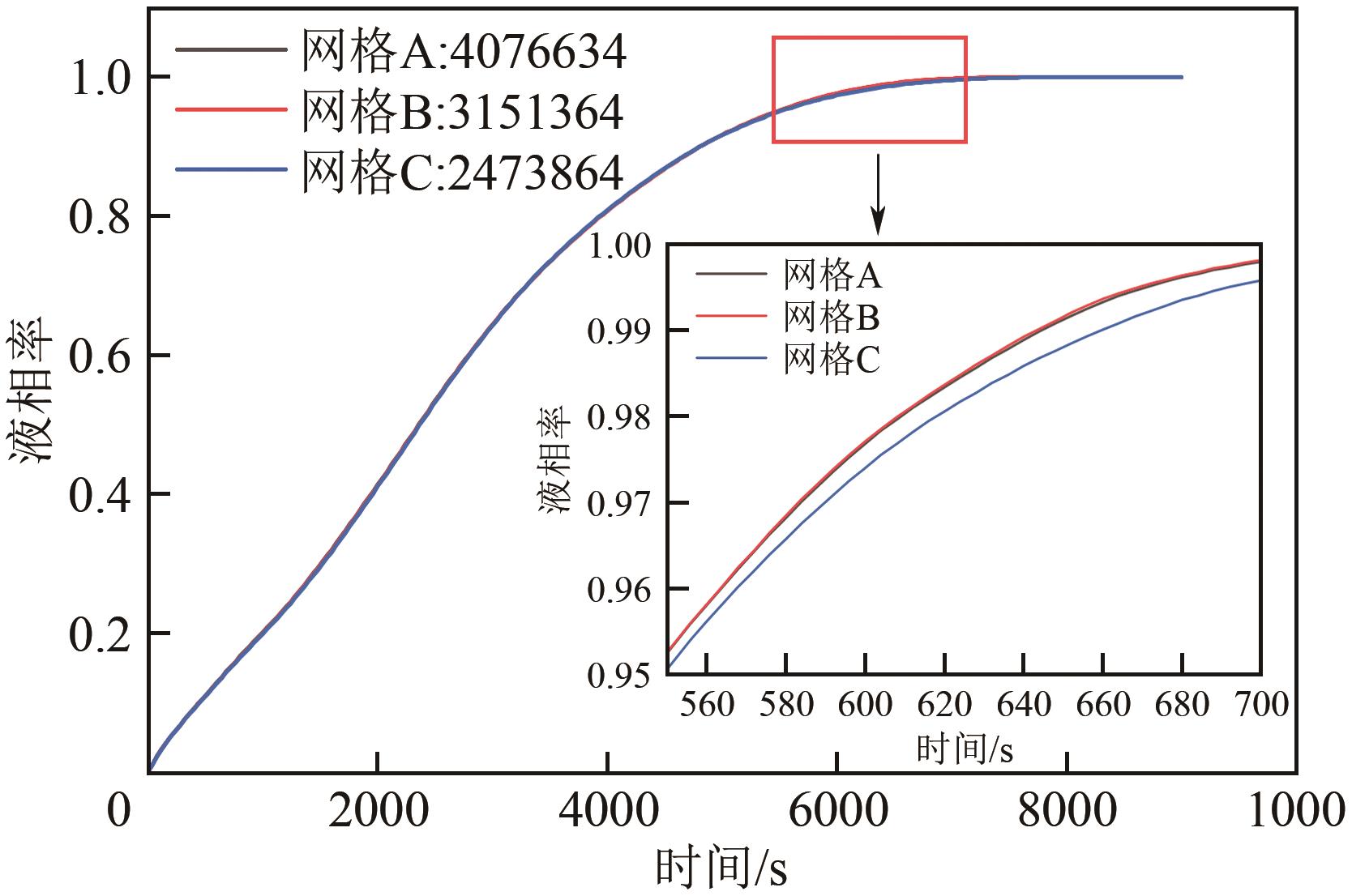| 1 |
田东东, 王会, 刁永发, 等. 金属泡沫孔密度对石蜡融化性能影响的实验研究[J]. 西安交通大学学报, 2020, 54(5): 32-39.
|
|
TIAN Dongdong, WANG Hui, DIAO Yongfa, et al. Experimental investigation on the melting behavior of paraffin wax embedded in metal foams with different pore densities[J]. Journal of Xi’an Jiaotong University, 2020, 54(5): 32-39.
|
| 2 |
韩广顺, 丁红胜, 童莉葛. 列管式相变储能换热器强化换热的数值研究[J]. 工程热物理学报, 2016, 37(9): 2012-2018.
|
|
HAN Guangshun, DING Hongsheng, TONG Lige. Numerical study on heat transfer enhancement of the cross-flow latent thermal energy storage heat exchanger[J]. Journal of Engineering Thermophysics, 2016, 37(9): 2012-2018.
|
| 3 |
朱孟帅, 张华, 闫勤学, 等. 泡沫金属填充率对相变材料强化换热的机理研究[J]. 制冷学报, 2021, 42(5): 127-133.
|
|
ZHU Mengshuai, ZHANG Hua, YAN Qinxue, et al. Study on the effect of foamed metal copper filling ratio on the enhanced heat transfer mechanism of phase change materials[J]. Journal of Refrigeration, 2021, 42(5): 127-133.
|
| 4 |
宋瀚文, 王子龙, 闫勤学, 等. 石蜡-泡沫铜复合相变蓄热材料热特性的研究[J]. 功能材料, 2021, 52(6): 6102-6109.
|
|
SONG Hanwen, WANG Zilong, YAN Qinxue, et al. Study on thermal characteristics of paraffin/metal foam composite PCMs[J]. Journal of Functional Materials, 2021, 52(6): 6102-6109.
|
| 5 |
VERDIER D, FALCOZ Q, FERRIÈRE A. Design of a protection thermal energy storage using phase change material coupled to a solar receiver[J]. High Temperature Materials and Processes, 2014, 33(6): 509-523.
|
| 6 |
方桂花, 刘殿贺, 张伟, 等. 复合类相变蓄热材料的研究进展[J]. 化工新型材料, 2021, 49(6): 6-10.
|
|
FANG Guihua, LIU Dianhe, ZHANG Wei, et al. Recent advance on composite phase change thermal storage materials[J]. New Chemical Materials, 2021, 49(6): 6-10.
|
| 7 |
黄欣鹏, 唐超权, 施娟, 等. 泡沫铝和石蜡复合相变材料的传热特性分析[J]. 东南大学学报(自然科学版), 2017, 47(1): 73-78.
|
|
HUANG Xinpeng, TANG Chaoquan, SHI Juan, et al. Heat transfer characteristics on composite phase change materials filled with foamed aluminum and paraffin wax[J]. Journal of Southeast University (Natural Science Edition), 2017, 47(1): 73-78.
|
| 8 |
陈岩, 叶宇轩, 杜文静. 泡沫金属在熔盐相变蓄热中的强化传热特性[J]. 化工进展, 2020, 39(7): 2566-2573.
|
|
CHEN Yan, YE Yuxuan, DU Wenjing. Heat transfer enhancement performance in phase change process of molten salt using foam metal[J]. Chemical Industry and Engineering Progress, 2020, 39(7): 2566-2573.
|
| 9 |
JACOB R, BRUNO F. Review on shell materials used in the encapsulation of phase change materials for high temperature thermal energy storage[J]. Renewable and Sustainable Energy Reviews, 2015, 48: 79-87.
|
| 10 |
田伟, 梁晓光, 党硕, 等. 金属泡沫-翅片复合结构强化相变蓄热的实验研究[J]. 西安交通大学学报, 2021, 55(11): 17-24.
|
|
TIAN Wei, LIANG Xiaoguang, DANG Shuo, et al. Visualized experimental study on the phase change heat storage enhanced with metal foam[J]. Journal of Xi’an Jiaotong University, 2021, 55(11): 17-24.
|
| 11 |
ZHANG P, MENG Z N, ZHU H, et al. Melting heat transfer characteristics of a composite phase change material fabricated by paraffin and metal foam[J]. Applied Energy, 2017, 185: 1971-1983.
|
| 12 |
MANCIN S, DIANI A, DORETTI L, et al. Experimental analysis of phase change phenomenon of paraffin waxes embedded in copper foams[J]. International Journal of Thermal Sciences, 2015, 90: 79-89.
|
| 13 |
MA Zhibo, ZHANG D Z, LIU Fei, et al. Lattice structures of Cu-Cr-Zr copper alloy by selective laser melting: microstructures, mechanical properties and energy absorption[J]. Materials & Design, 2020, 187: 108406.
|
| 14 |
DENG Xing, LIU Fei, ZHANG Zhengwen, et al. The effect of periodic porous Al on the heat transfer performance of paraffin[J]. IOP Conference Series: Earth and Environmental Science, 2021, 680(1): 012069.
|
| 15 |
QURESHI Z A, ELNAJJAR E, AL-KETAN O, et al. Heat transfer performance of a finned metal foam-phase change material (FMF-PCM) system incorporating triply periodic minimal surfaces (TPMS)[J]. International Journal of Heat and Mass Transfer, 2021, 170: 121001.
|
| 16 |
张馨月. 基于三周期极小曲面的SLM成形夹芯结构研究[D]. 重庆: 重庆大学, 2019.
|
|
ZHANG Xinyue. Design method and performance study of SLM formed sandwich structures based on triply periodic minimal surfaces[D]. Chongqing: Chongqing University, 2019.
|
| 17 |
ZHAO Miao, LIU Fei, FU Guang, et al. Improved mechanical properties and energy absorption of BCC lattice structures with triply periodic minimal surfaces fabricated by SLM[J]. Materials, 2018, 11(12): 2411.
|
| 18 |
万倩, 肖浩南, 钱京, 等. 泡沫铁对石蜡相变储热过程的影响[J]. 储能科学与技术, 2020, 9(1): 94-100.
|
|
WAN Qian, XIAO Haonan, QIAN Jing, et al. Influence of iron foam on paraffin phase change heat storage process[J]. Energy Storage Science and Technology, 2020, 9(1): 94-100.
|
 ), 刘飞3, 张涛1,2, 邓兴4, 张正文1,2(
), 刘飞3, 张涛1,2, 邓兴4, 张正文1,2( )
)
 ), LIU Fei3, ZHANG Tao1,2, DENG Xing4, ZHANG Zhengwen1,2(
), LIU Fei3, ZHANG Tao1,2, DENG Xing4, ZHANG Zhengwen1,2( )
)










